All Data
Indicator Gauge Icon Legend
Legend Colors
Red is bad, green is good, blue is not statistically different/neutral.
Compared to Distribution
 the value is in the best half of communities.
the value is in the best half of communities.
 the value is in the 2nd worst quarter of communities.
the value is in the 2nd worst quarter of communities.
 the value is in the worst quarter of communities.
the value is in the worst quarter of communities.
Compared to Target
 meets target;
meets target;  does not meet target.
does not meet target.
Compared to a Single Value
 lower than the comparison value;
lower than the comparison value;
 higher than the comparison value;
higher than the comparison value;
 not statistically different from comparison value.
not statistically different from comparison value.
Trend

 non-significant change over time;
non-significant change over time; 
 significant change over time;
significant change over time;  no change over time.
no change over time.
Compared to Prior Value
 higher than the previous measurement period;
higher than the previous measurement period;
 lower than the previous measurement period;
lower than the previous measurement period;
 no statistically different change from previous measurement period.
no statistically different change from previous measurement period.
State: Oregon
Health / Sexually Transmitted Infections
State: Oregon HIV Prevalence Rate
State: Oregon HIV Prevalence Rate


State: Oregon HPV Immunization Completion (13-to 17-year-olds)
State: Oregon HPV Immunization Completion (13-to 17-year-olds)


State: Oregon HPV Immunization Completion (13-year-olds)
State: Oregon HPV Immunization Completion (13-year-olds)


State: Oregon HPV Immunization Initiation (13-to 17-year-olds)
State: Oregon HPV Immunization Initiation (13-to 17-year-olds)


State: Oregon HPV Immunization Initiation (13-year-olds)
State: Oregon HPV Immunization Initiation (13-year-olds)


State: Oregon Syphilis Incidence Rate
State: Oregon Syphilis Incidence Rate
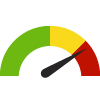



State: Oregon
Health / Tobacco Use


State: Oregon Tobacco-Linked Death Rate
State: Oregon Tobacco-Linked Death Rate


State: Oregon
Health / Weight Status
State: Oregon Students who are Obese
State: Oregon Students who are Obese


State: Oregon
Health / Wellness & Lifestyle
State: Oregon Frequent Physical Distress
State: Oregon Frequent Physical Distress
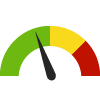


State: Oregon Insufficient Sleep
State: Oregon Insufficient Sleep




State: Oregon Self-Reported General Health Assessment: Good or Better
State: Oregon Self-Reported General Health Assessment: Good or Better



State: Oregon
Community / Civic Engagement
State: Oregon Voter Turnout: Presidential Election
State: Oregon Voter Turnout: Presidential Election



State: Oregon
Community / Crime & Crime Prevention
State: Oregon Age-Adjusted Death Rate due to Homicide
State: Oregon Age-Adjusted Death Rate due to Homicide
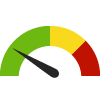




State: Oregon
Community / Demographics
State: Oregon Average Household Size
State: Oregon Average Household Size


State: Oregon Female Population
State: Oregon Female Population



State: Oregon Foreign Born Persons
State: Oregon Foreign Born Persons


State: Oregon Households
State: Oregon Households

State: Oregon Male Population
State: Oregon Male Population





State: Oregon Population American Indian and Alaska Native
State: Oregon Population American Indian and Alaska Native



State: Oregon Population Asian
State: Oregon Population Asian



State: Oregon Population Black or African American
State: Oregon Population Black or African American



State: Oregon Population Hispanic or Latino
State: Oregon Population Hispanic or Latino



State: Oregon Population Native Hawaiian and Other Pacific Islander
State: Oregon Population Native Hawaiian and Other Pacific Islander



State: Oregon Population Over Age 65
State: Oregon Population Over Age 65



State: Oregon Population Over Age 65 (Count)
State: Oregon Population Over Age 65 (Count)

State: Oregon Population Two or More Races
State: Oregon Population Two or More Races



State: Oregon Population Under Age 18
State: Oregon Population Under Age 18



State: Oregon Population Under Age 5
State: Oregon Population Under Age 5



State: Oregon Population White
State: Oregon Population White



State: Oregon Population White (Not Hispanic or Latino)
State: Oregon Population White (Not Hispanic or Latino)



State: Oregon Total Population
State: Oregon Total Population


State: Oregon Veteran Population
State: Oregon Veteran Population


State: Oregon
Community / Public Safety
State: Oregon Age-Adjusted Death Rate due to Motor Vehicle Collisions
State: Oregon Age-Adjusted Death Rate due to Motor Vehicle Collisions



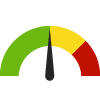




State: Oregon Alcohol-Impaired Driving Deaths
State: Oregon Alcohol-Impaired Driving Deaths




State: Oregon
Community / Social Environment
State: Oregon Children in Single-Parent Households
State: Oregon Children in Single-Parent Households



State: Oregon Linguistic Isolation
State: Oregon Linguistic Isolation



State: Oregon People 65+ Living Alone
State: Oregon People 65+ Living Alone
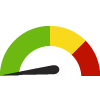


State: Oregon People 65+ Living Alone (Count)
State: Oregon People 65+ Living Alone (Count)

State: Oregon Social Associations
State: Oregon Social Associations




State: Oregon Substantiated Child Abuse Rate
State: Oregon Substantiated Child Abuse Rate




State: Oregon
Community / Transportation
State: Oregon Households without a Vehicle
State: Oregon Households without a Vehicle



State: Oregon Mean Travel Time to Work
State: Oregon Mean Travel Time to Work



State: Oregon Solo Drivers with a Long Commute
State: Oregon Solo Drivers with a Long Commute
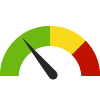



State: Oregon Workers Commuting by Public Transportation
State: Oregon Workers Commuting by Public Transportation




State: Oregon Workers Who Bike to Work
State: Oregon Workers Who Bike to Work


State: Oregon Workers who Drive Alone to Work
State: Oregon Workers who Drive Alone to Work



State: Oregon Workers who Walk to Work
State: Oregon Workers who Walk to Work



State: Oregon
Economy / Employment
State: Oregon Employer Establishments
State: Oregon Employer Establishments


State: Oregon Female Population 16+ in Civilian Labor Force
State: Oregon Female Population 16+ in Civilian Labor Force



State: Oregon Population 16+ in Civilian Labor Force
State: Oregon Population 16+ in Civilian Labor Force



State: Oregon Size of Labor Force
State: Oregon Size of Labor Force


State: Oregon Total Employment
State: Oregon Total Employment


State: Oregon Total Employment Change
State: Oregon Total Employment Change
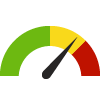



State: Oregon Unemployed Workers in Civilian Labor Force
State: Oregon Unemployed Workers in Civilian Labor Force
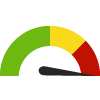



State: Oregon
Economy / Food Insecurity
State: Oregon Child Food Insecurity Rate
State: Oregon Child Food Insecurity Rate




State: Oregon Food Insecure Children Likely Ineligible for Assistance
State: Oregon Food Insecure Children Likely Ineligible for Assistance




State: Oregon Food Insecurity Rate
State: Oregon Food Insecurity Rate




State: Oregon Households Receiving SNAP with Children
State: Oregon Households Receiving SNAP with Children


State: Oregon Households Receiving SNAP with Children (Count)
State: Oregon Households Receiving SNAP with Children (Count)

State: Oregon Projected Child Food Insecurity Rate
State: Oregon Projected Child Food Insecurity Rate

State: Oregon Projected Food Insecurity Rate
State: Oregon Projected Food Insecurity Rate

State: Oregon Students Eligible for the Free Lunch Program
State: Oregon Students Eligible for the Free Lunch Program




State: Oregon
Economy / Government Assistance


State: Oregon Households with Cash Public Assistance Income
State: Oregon Households with Cash Public Assistance Income



State: Oregon
Economy / Housing & Homes
State: Oregon Homeowner Vacancy Rate
State: Oregon Homeowner Vacancy Rate



State: Oregon Homeownership
State: Oregon Homeownership



State: Oregon Housing Units
State: Oregon Housing Units


State: Oregon Median Household Gross Rent
State: Oregon Median Household Gross Rent


State: Oregon Median Housing Unit Value
State: Oregon Median Housing Unit Value




State: Oregon Mortgaged Owners Median Monthly Household Costs
State: Oregon Mortgaged Owners Median Monthly Household Costs







State: Oregon Overcrowded Households
State: Oregon Overcrowded Households


State: Oregon Renters Spending 30% or More of Household Income on Rent
State: Oregon Renters Spending 30% or More of Household Income on Rent




State: Oregon Severe Housing Problems
State: Oregon Severe Housing Problems




State: Oregon
Economy / Income


State: Oregon Income Inequality
State: Oregon Income Inequality



State: Oregon Median Household Income
State: Oregon Median Household Income



State: Oregon Per Capita Income
State: Oregon Per Capita Income



State: Oregon
Economy / Poverty
State: Oregon Children Living Below Poverty Level
State: Oregon Children Living Below Poverty Level



State: Oregon Families Living Below Poverty Level
State: Oregon Families Living Below Poverty Level



State: Oregon Households Living Below Poverty Level
State: Oregon Households Living Below Poverty Level

State: Oregon People 65+ Living Below Poverty Level
State: Oregon People 65+ Living Below Poverty Level



State: Oregon People 65+ Living Below Poverty Level (Count)
State: Oregon People 65+ Living Below Poverty Level (Count)

State: Oregon People Living 200% Above Poverty Level
State: Oregon People Living 200% Above Poverty Level



State: Oregon People Living Below Poverty Level
State: Oregon People Living Below Poverty Level




State: Oregon Youth not in School or Working
State: Oregon Youth not in School or Working



State: Oregon
Education / Childcare & Early Childhood Education
State: Oregon Child Care Centers
State: Oregon Child Care Centers


State: Oregon
Education / Educational Attainment
State: Oregon People 25+ with a Bachelor's Degree or Higher
State: Oregon People 25+ with a Bachelor's Degree or Higher



State: Oregon People 25+ with a High School Diploma or Higher
State: Oregon People 25+ with a High School Diploma or Higher



State: Oregon
Education / Literacy


State: Oregon Kindergarten Readiness: Total Population
State: Oregon Kindergarten Readiness: Total Population





State: Oregon
Education / School Environment
State: Oregon Student-to-Teacher Ratio
State: Oregon Student-to-Teacher Ratio




State: Oregon
Education / Student Performance K-12
State: Oregon 3rd Grade Students Proficient in Math
State: Oregon 3rd Grade Students Proficient in Math

State: Oregon 3rd Grade Students Proficient in Reading
State: Oregon 3rd Grade Students Proficient in Reading

State: Oregon 8th Grade Students Proficient in Math
State: Oregon 8th Grade Students Proficient in Math


State: Oregon 8th Grade Students Proficient in Reading
State: Oregon 8th Grade Students Proficient in Reading




State: Oregon High School Drop Outs
State: Oregon High School Drop Outs


State: Oregon High School Graduation
State: Oregon High School Graduation



State: Oregon
Environmental Health / Air
State: Oregon Recognized Carcinogens Released into Air
State: Oregon Recognized Carcinogens Released into Air


State: Oregon
Environmental Health / Built Environment
State: Oregon Access to Exercise Opportunities
State: Oregon Access to Exercise Opportunities



State: Oregon Access to Parks
State: Oregon Access to Parks

State: Oregon Food Environment Index
State: Oregon Food Environment Index




State: Oregon Liquor Store Density
State: Oregon Liquor Store Density




State: Oregon Proximity to Highways
State: Oregon Proximity to Highways

State: Oregon
Environmental Health / Toxins & Contaminants
State: Oregon Houses Built Prior to 1950
State: Oregon Houses Built Prior to 1950



State: Oregon PBT Released
State: Oregon PBT Released


State: Oregon
Environmental Health / Weather & Climate
State: Oregon Daily Dose of UV Irradiance
State: Oregon Daily Dose of UV Irradiance



